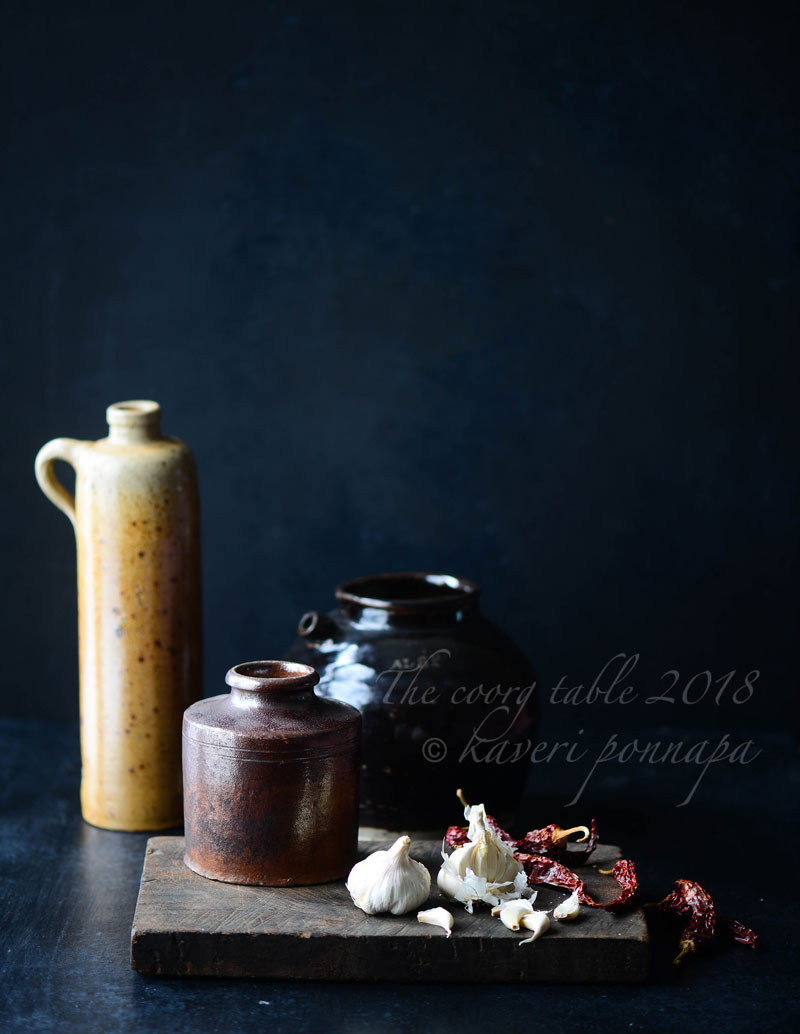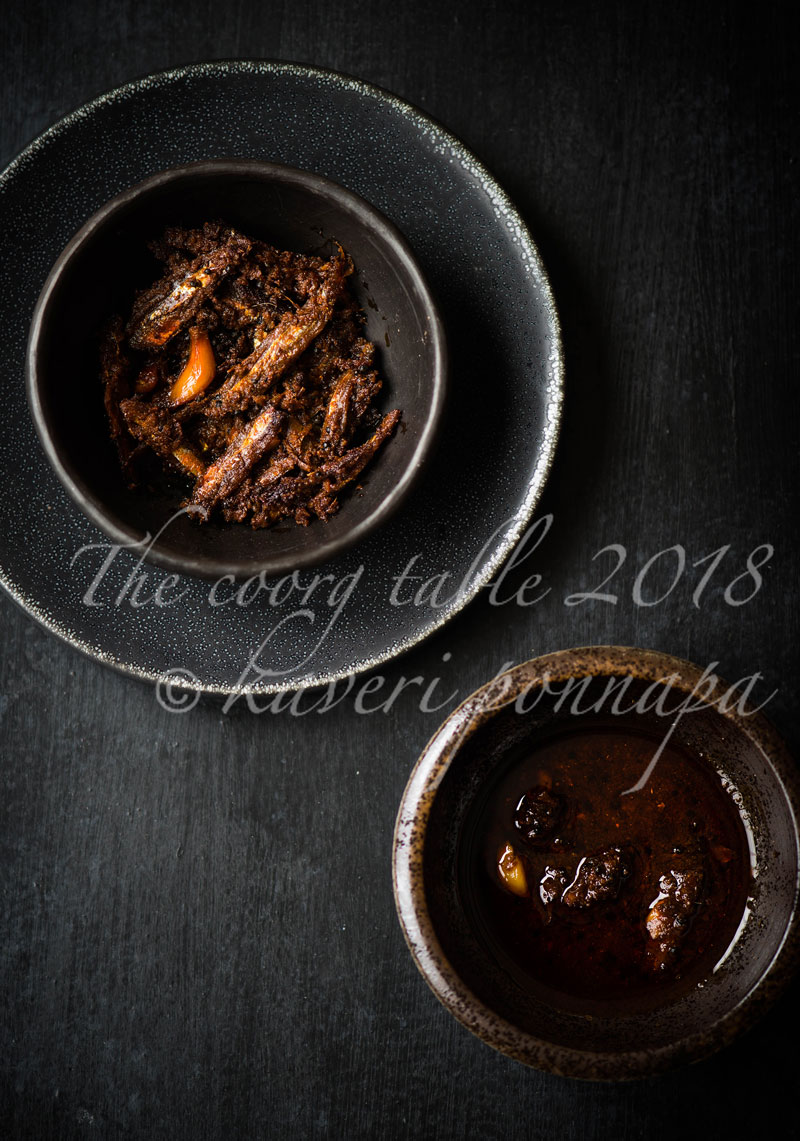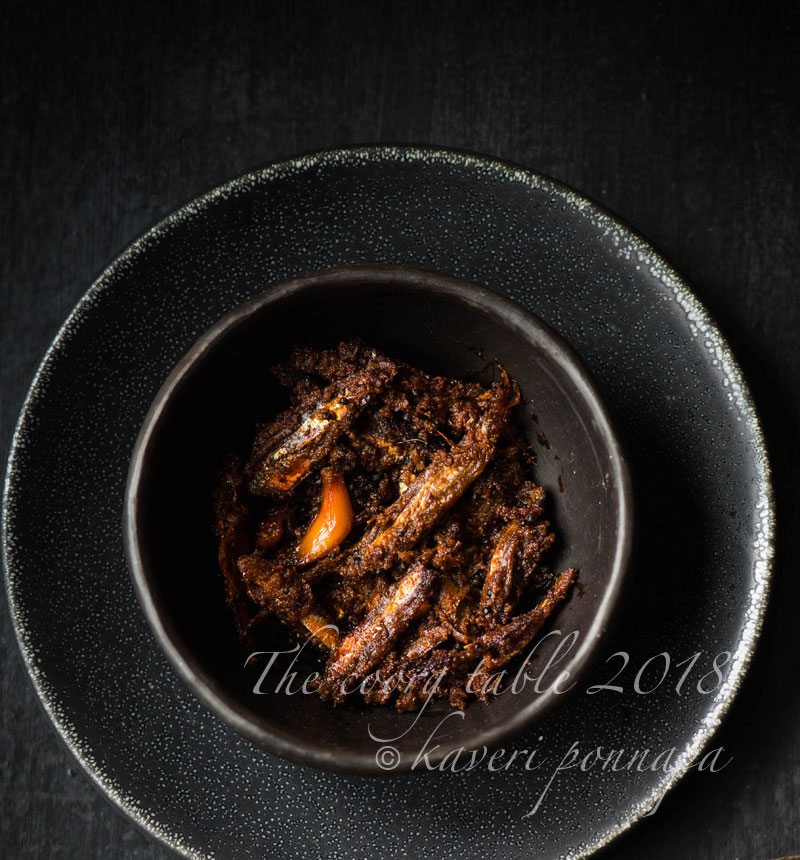A cascade of slender, pink-tinged freshwater fish landed on my kitchen table in the early summer months of this year. The pile of tiny, curved shapes had me wavering between delight and confusion. Delight at the many ways —fresh, dried and pickled —these koilemeen would bring pleasure to our table for some months to come. Confusion at the timing of their arrival —they were way off season, by several months and I wondered, rather nervously, what that meant. For the moment though, I immersed myself in pleasant thoughts of how to make the most of this windfall and stretch out the flavours as long as possible: a tart, spicy pickle that I love; a curry dense with fish, scooped up in curls of akki otti, and marvellous little spiced fish patties, fried crisp, which you just can’t stop eating. As it turned out, when I asked around, there were so many acres of unplanted rice fields this year that the streams in many parts of Coorg ran free, unhindered, bringing quantities of these miniature fish when we did not expect to see them.

If you balance along the narrow ridges of earth that demarcate cultivated paddy fields and follow the lines at random, sooner or later, you will come across a narrow channel of clear, flowing water that has been diverted from a stream to flood the fields. It is always tempting to pause under the hot sun and dip your hand in to allow the cool, fast flow to run through your fingers and listen to the sounds of water over stone and mud. When you look up, you may spot the red rooftop tiles of a comfortable looking home set well back into a hillside, partially hidden by trees; a puff of wood-smoke; often a flash of red from a hibiscus bush. You may hear dogs barking in the distance. There is a particular, wide stretch of paddy fields that takes my breath away every time I stop or even drive by — so rich, tranquil and timeless. Depending on the season, it is a ripple of young, luminous green —or ripe gold. Even when it is brown, harvested stubble, it holds its own, stark beauty. Right at the heart of this expanse of growing grain is a small, beautiful old shrine. To reach it, you have to walk across embankments, across the fields. Koilemeen, which thrives in fresh water rivers and streams is linked in our minds to spaces just like these. At the time of year when the breaches in the embankments are opened to irrigate fields where sharp green shafts of paddy grow, they are trapped within the woven fronds of coconut and fish-tail palms placed across the breaches that channel water into the fields. They make their way into kitchens to be sorted, curried, pickled and dried. Then back full circle to the fields again, dried and cooked into a protein-rich, umami-infused kootu curry to feed hungry people who have been working knee-deep in water, transplanting saplings of paddy.
A narrow road cuts right through this valley flanked by rice fields on either side. From the occasional, battered, mud-splattered Jeep and the infrequent bus services that connected local villages, the traffic has increased to a non-stop flow of angry, impatient, speeding, honking cars and tourist busses, a small indication of the violent changes that have come to Coorg in just a decade. Ugly constructions crawl all over hillsides too steep to bear the weight of the urban sprawl. More green cover is eaten by construction, but there is no pause. Rivers are stripped of sand to feed the insatiable, frenetic building that refuses to stop. And fields lie sterile, as the cost of planting and tending them soars, and water shortages become chronic.

This year the free-flowing streams brought off-season koilemeen and much else that we did not expect. Everywhere, the waters ran free: down hillsides with no trees to slow down the run-off from the torrential rains that came; over river beds ruthlessly stripped of sand, bringing down embankments; across roads, into homes, swift, deep, changing course at will. Homes, crops, livestock disappeared. Lives were lost. What was left was a devastated landscape that had changed forever.
Still, for some, there has not been enough progress and development of the kind that has brought us this disaster, at the cost of the natural world. I have to turn to the words of Annie Proulx, a writer whose works reflect her great love of nature, wondering how to “stave off grief at the visible decline of a world we took for granted only a few decades ago.” For the many people who call, write and visit, to share their distress and anxiety, people who ask ‘what do we do’, my answer is close to Annie Proulx’s: “to keep working in personal ways to protect what we still have”. It’s personal choice, extended to community effort.
Of the koilemeen that came so early, there is a small, latticed heap of pickled fish in a bowl on my dining table smothered in a spice paste, a silvery flash escaping from the red here and there, the pungent scent of vinegar and chilli rising towards me in a powerful wave. Pickling turns the fish a little chewy and intensifies its flavour so that a little bit goes a long way. This will last for a while. Koilemeen and how it comes to our tables is so much a part of the seasons, what we eat and who we are, it would be an irreparable loss if it was cast, along with rice, which was once our wealth —by something called development —into oblivion.
All Food Styling: Kaveri Ponnapa
Photo Credits: A.G.P Sathyaprakash
Do look out for the recipes of all the food featured here in my upcoming cookbook.





Interesting read.Though i am not a big fan of pickles, after looking at this delicious looking koilemeen pickle i have decided to make some during my next visit to Coorg. Thanks for sharing so many mouth watering dishes on this site:)
Hello Bindu, I hope that you manage to get some fresh koilemeen for the pickle, they are becoming quite rare these days! The pickle is delicious, and definitely worth the effort of cleaning the fish! I’m glad you enjoyed this post, do keep reading. Best wishes. Kaveri
It is indeed mouth watering to read on the Koilemeen pickle and various other dishes. It is really rare to see this tiny creature in our paddy field & streams of Coorg these days. Rampant usage of pesticides are one of the cause.
Thanks a lot writing this article for bringing back the memories of my childhood dishes.
It’s always great to hear from someone who has enjoyed reading a post, Subbaiah – we all have a special place in our memories for dishes we loved as children. I’m happy this brought back the tastes of forgotten foods. Thank you for sharing your thoughts. Do keep reading. Kaveri
Thank you for putting down these experiences so beautifully. I happened to be near a river in my neighborhood last week and watched a Mandi come up from a narrow path with her koilemeen catch. Hope to join her next time. 🙂
I would love to hear from you if you do decide to join her in trapping koilemeen, Pooja! It must have been a beautiful sight, beside the river, especially after the rains. Thank you for reading and appreciating this post. Warm wishes. Kaveri
Have never been fond of fish (except fish fingers/cutlets) but your writing makes me yearn for a whiff of Meen paara and for the Kodagu of 2decades ago.
Hello Pavithra, it is so good to hear that this post has taken you back to the world of meen para and an unspoilt Coorg that we all loved and took for granted. I’m sure there are ways in which we can keep what we still have. Warm wishes. Kaveri
In the month of September once flood water level comes down there will be lot of fishes which will remain in Paddy field and stream water we use to keep Poda (made from bamboo stick which is used to catch fishes) once these fishes are caught, they are used in variety of dishes like koile meen curry, dry fish for fry, pickle etc…memories recollected thanks once again for your wonderful writing….Thank you so much….
Hi Kaverappa, good catches of koilemeen so rare now, I hope they don’t become just a memory. And yes, the curries, pickles, fried and dried versions that you mention are some of the most flavourful dishes on our tables. It must have been such a different world, setting the traps and catching the fish yourselves, surrounded by all that natural beauty. Do keep writing. Warm wishes. Kaveri